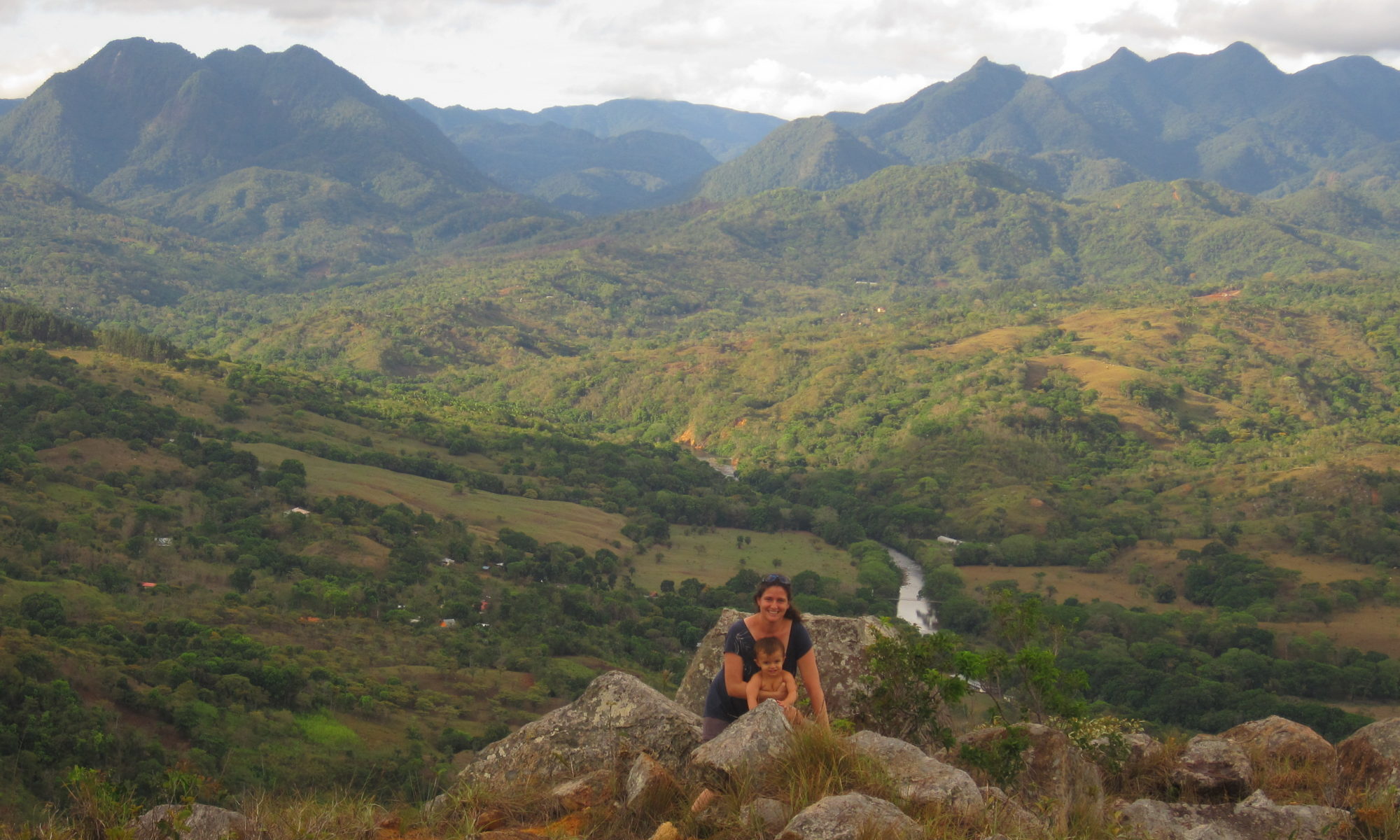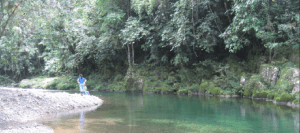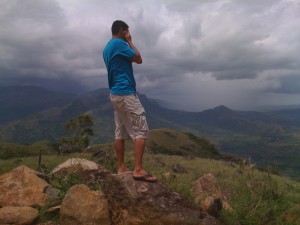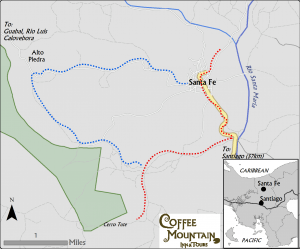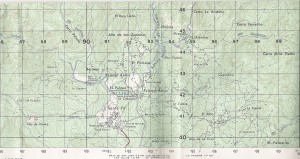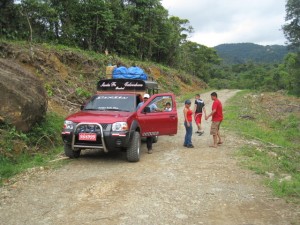
Chivas (translated goats) is a term used to refer to small transport vehicles, most often pickup trucks with an area in the back where people sit. These are often used in rural areas to get between small towns on rough roads.
Transportation is a competitive business
In Santa Fe, there are two internal routes, one goes from Santa Fe-Guabal (though the Chivas are marked with Calovebora), the other makes a circuit of Santa Fe – El Pantano. There are a limited number of trips permitted on each route, and each driver or owner holds a cupo for the right to drive on that route. The national government sets the fare-you will not be overcharged on a chiva. In both cases in Santa Fe, there are several owners who operate on each route. They work up a schedule for which chiva operates when. Some drivers are the owners themselves, others are employees of the owners, and still others work out a deal with the owners for commission. As with any business where owners compete for limited resources, there are rivalries and also alliances between operators.
Did you know: You may occasionally see these chivas chain up. Chains on tires are used for mud, not snow in Panama.
How to take a chiva
- If you’re near the center of Santa Fe, simply grab one near the central plaza. If you’re on one of the roads around Santa Fe, hail it. (How I hail a chiva: Turn around to face the truck. Make eye contact. The driver may toot his horn, this is asking, hey do you want to get on? Whether s/he does or not, stick out your arm (you’re saying, why yes I do want a ride)) If you have a stopping place that’s not the end of the route, tell the driver before you get on. Make sure they understand.
- Climb in back. The driver may ask if you want to sit in front. I’m overly cautious, and as a woman, I prefer to travel with other people in back. Ladies, Panamanian men tend to be very flirtatious and male drivers often ask a pretty woman (like you obviously) to sit in front with them. I’ve heard some of the less generous women refer to these seats as the “bus slut” seats. I think this is very unfair, it’s a woman’s prerogative to look good if she wants to. And flirting can be fun, but just be forewarned that flirting may ensue. Bus slut or not, if you’re lugging around a big backpack, the driver may ask you to put it on top of the vehicle. Do this. If it rains, there will be a tarp that goes over it.
- You can always ask for a stop by banging the outside of the vehicle. If other people in the back see you doing this, they’ll help you.
- When you get off, don’t forget to wait for your luggage to be handed down. Pay the driver.
